How to Build an E-commerce Email List in 2025?
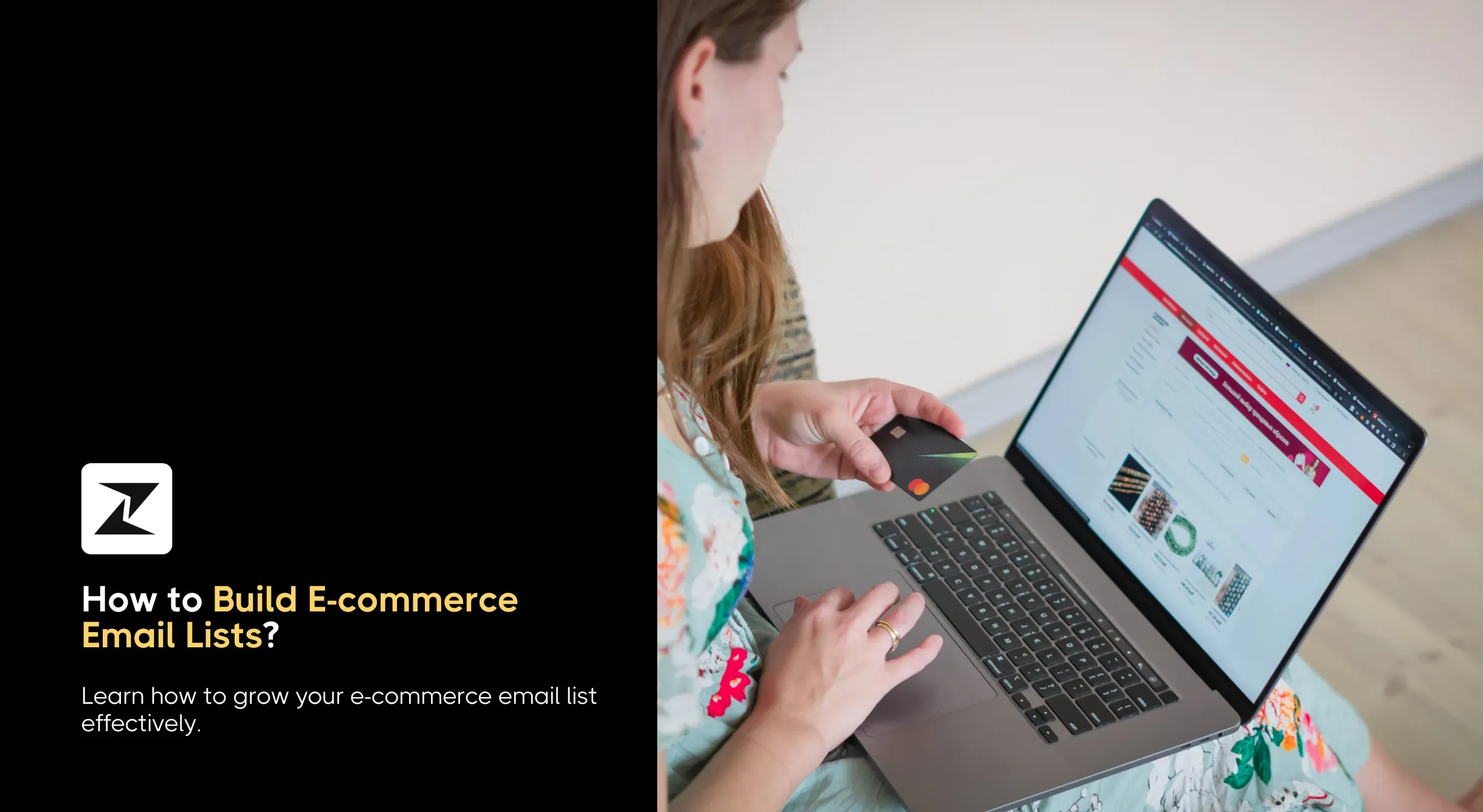
Have you also received promotional and informational email newsletters from businesses in your inbox? If so, then you are a part of their emailing lists, allowing you to stay updated with their offerings.
Going on the other side of things, if you are running an e-commerce business, you would want to stay connected with your customers throughout the entire customer journey and even for the post-sales engagement.
That being said, if you also want to reach out to leads and customers for streamlined customer engagement, you will have to get their email addresses, pop them into an email sender, design a layout, and send them at scale. Although this is easier said than done.
Before you can start with these bulk email campaigns, you need an email list containing relevant information about your customers like their names, email addresses, interests, and preferences. So, to help you get started with email marketing, in this blog post, I will walk you through the steps to create a personalized email list for your e-commerce store.
What are the advantages of building an e-commerce email list?
E-commerce email lists allow you to segment customers based on their interests, previous purchases, or browsing habits. Using these highly segmented email lists, you can send targeted emails to enhance engagement and boost interactions.
Personalized emails encourage readers to interact with them by providing valuable information about your business and its offerings. That being said, here are some of the benefits of creating an e-commerce email list:
A popular e-commerce medium
Every person who is connected to the internet has at least one working email address, making them eligible to receive your emails (if they opted for them.) According to Statista, there are 4.37 billion email users in the world, and this number is expected to increase to 4.89 billion by 2027. This goes to show that a well-designed email marketing campaign has the potential to greatly boost your engagement levels.
It is a direct form of communication
A well-crafted email serves as a direct means of interaction between you and your customers. Email can contain any kind of information ranging from informative newsletters to exclusive offers, making it an all-around e-commerce channel for enhanced customer engagement.
They provide value
If a lead or customer is spending time signing up for your emails, that means they are interested in your content and want to stay updated with your brand. Crafting engaging email content enables you to deliver value to your recipients that they are looking for. Plus, it allows you to convert them more easily later down the road.
A standalone channel for your e-commerce marketing
Other channels like social media sites or messaging apps are under the control of the companies that built them, meaning a certain change in their usability can greatly impact your e-commerce marketing.
However, your email list is not affected by external factors or changes, allowing you to stay in control and run outreach campaigns the way you want.
Build and segment users effectively into tailored e-commerce email lists.
Leverage Zixflow’s lead forms and in-built CRM to effortlessly build email lists for your e-commerce brand.
Design Opt-in Forms8 best ways to build your e-commerce email list
Building an email list for your e-commerce website takes time. You have to leverage multiple strategies for visitors, leads, and customers alike to provide their email addresses. For this reason, below I have outlined some of the tried and tested methods to capture email addresses along with relevant information to send valuable emails.
Website signup forms
Being an e-commerce store, your website is your storefront. Visitors will navigate through your site to browse products, place orders, and ask for customer support should they have questions. So why not include email capturing forms on each webpage to grab their email addresses?
The game is all about numbers here. The more pages you have, the more email forms you can add, increasing the probability of grabbing users’ email addresses. Although this might sound like a great idea to effectively gather email addresses, you have to ensure that you are not disrupting visitors with constant pop-ups or overloading pages with signup forms.
There are various locations on a webpage where you can add a signup form that does not interfere with browsing and sales experience. For example, adding a form at the bottom of a page after the main content can drive signups. Blog pages are perfect for these kinds of forms as readers often stay on them to the end.
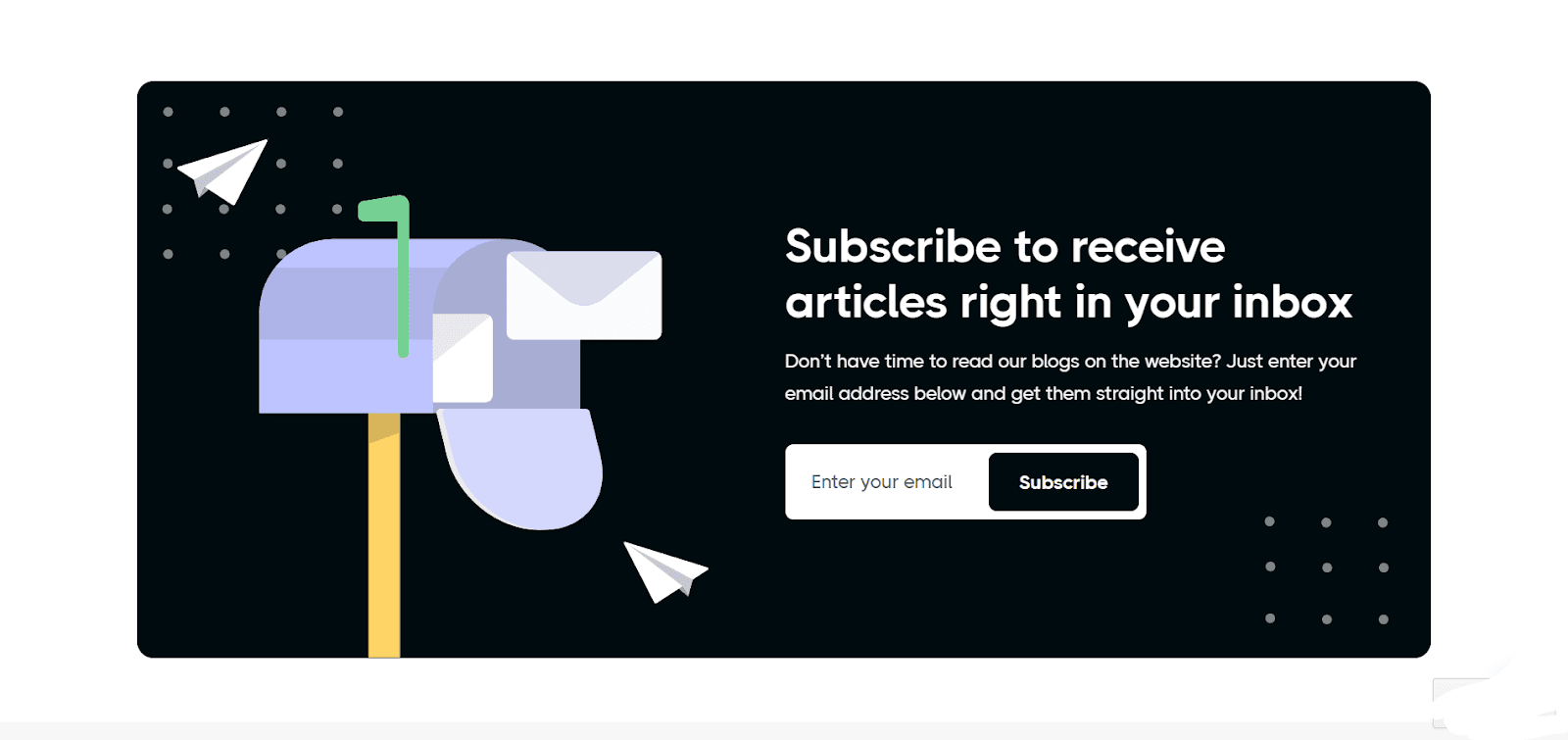
Another location to add a permanent email capture form is at the top of the menu or the bottom of the footer. These places are the most prominent locations on your site and your form will be easily visible to users.
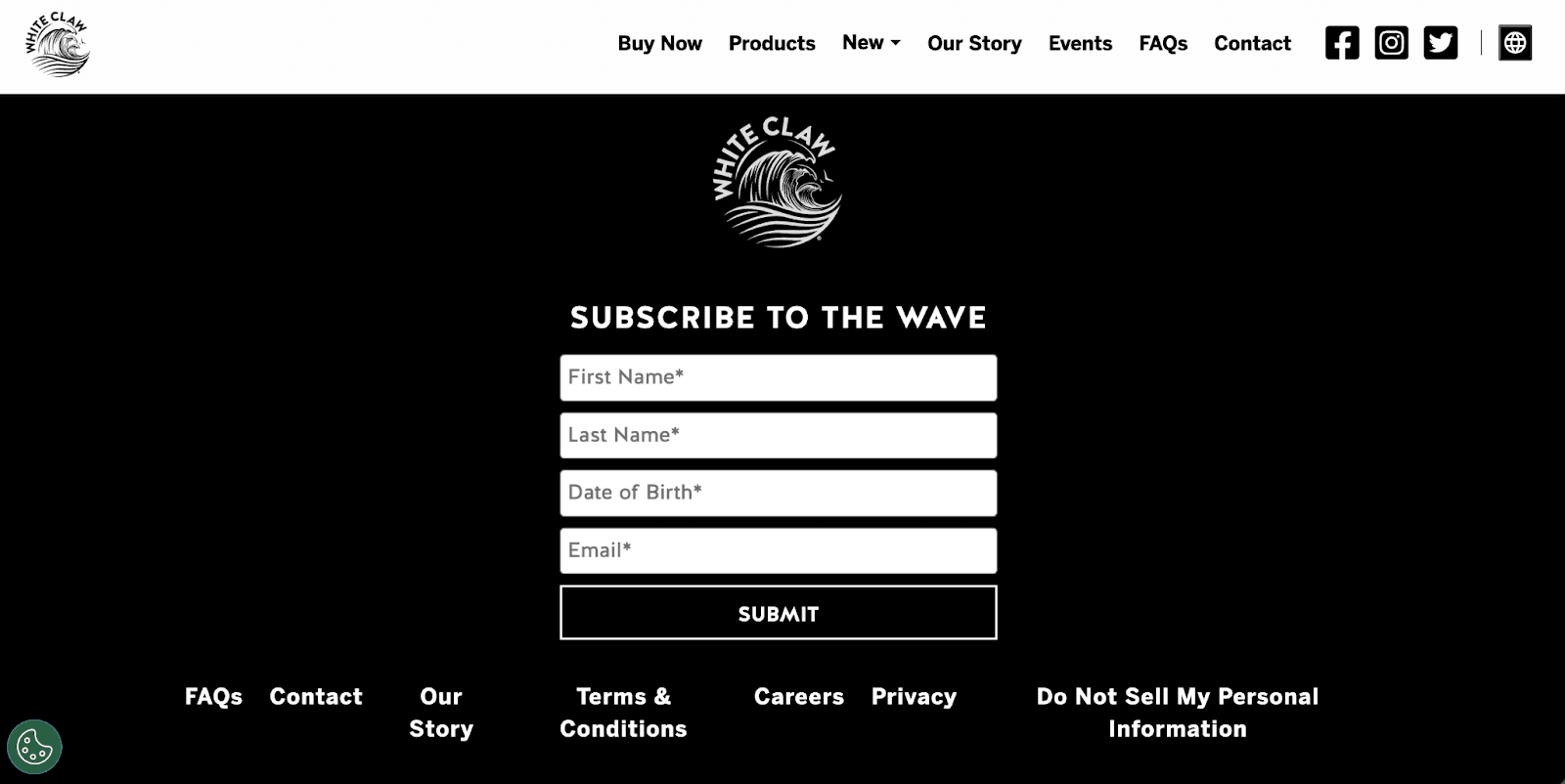
One more solid place to add an email signup form is the About Us page. First time visitors or interested prospects will likely navigate to your About Us page to learn more about your business. Having a form at the top of this page with an encouraging CTA will compel visitors to sign up for continued engagement.
You can also look for the most visited pages on your website by going through your Google Analytics to find the right place to include a form.
Leverage various types of popups
Popups have a bad name in terms of user engagement because they tend to disrupt the natural flow of users interacting with your business. However, when used correctly, popups are an excellent way to grab users’ email addresses.
The right way to utilize these popups is to make sure that you don’t interrupt visitors from achieving what they want to do before you ask them to sign up for your email list.
For example, if a visitor is browsing your website to look for a product, let them complete their search and when they are about to leave, incentivize them to get their contact information via an exit-intent popup.
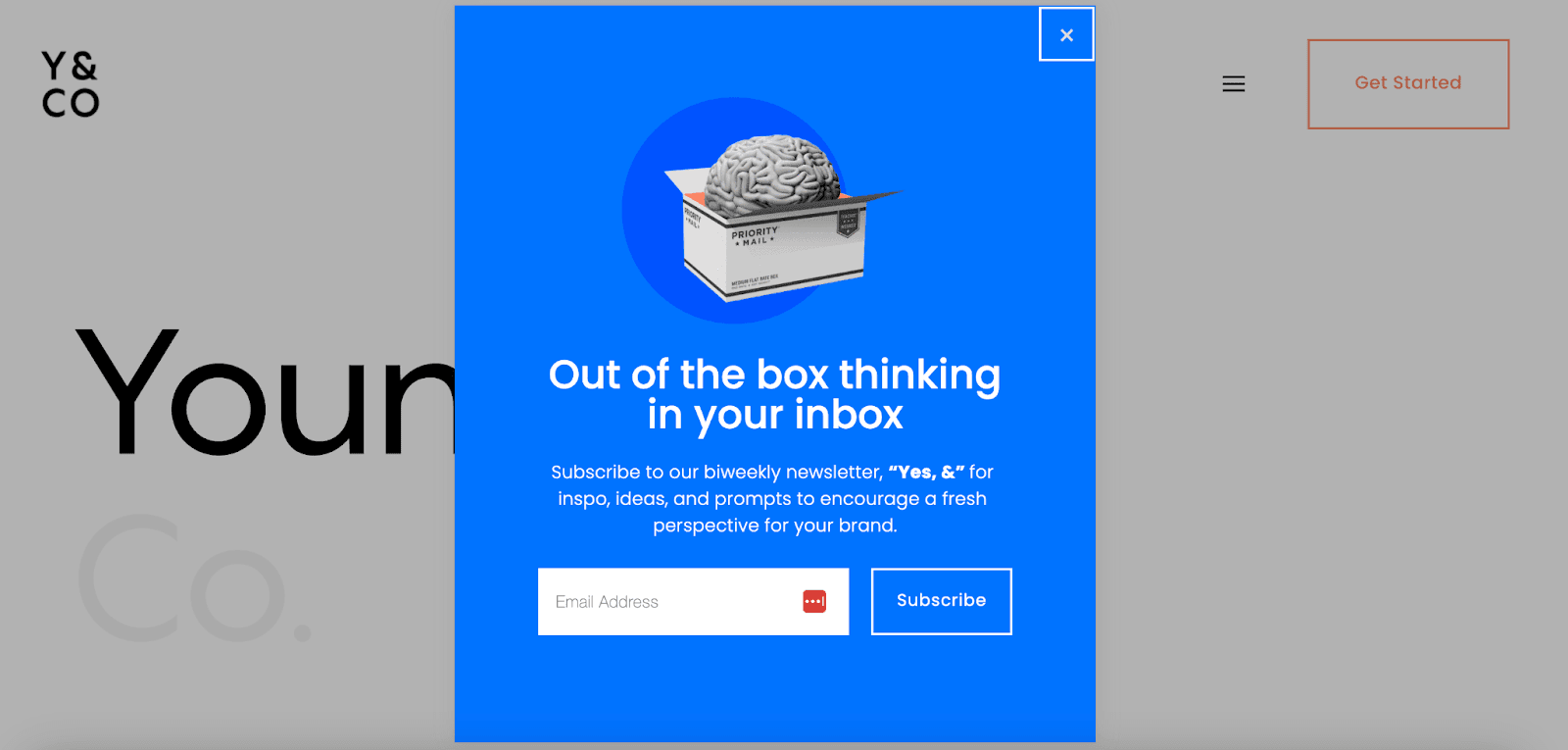
Craft your landing pages that allow for easy signups
If you are using external sites like social media or WhatsApp ads, then you need to create custom landing pages including tailored forms to capture visitors’ email addresses. Make sure that your landing pages should add value to visitors and not just include an email capturing form.
A few examples of attractive landing pages are contests, exclusive offers, free downloads, and any other kind of incentive. Once visitors are done navigating through your page, you can either add the signup form on the page or send it as an exit-intent popup.
Before crafting your landing pages, figure out the right kind of content that resonates with your audience. Oftentimes it is a video while sometimes it can be a blog post. Mix and match the landing page designs to identify the perfect one that can provide useful information while also letting you grab the email addresses for your e-commerce email marketing.
Capture emails leads with zero hassle.
Use Zixflow’s drag-and-drop builder to design branded forms that sync directly to your CRM.
Build Your First FormOffer attractive incentives
One of the easiest ways to get someone to do a task is to provide something in return. And what better way to do that for your e-commerce business than by providing a tailored offer to your users?
Providing some kind of special incentive to drive email opt-ins for your marketing list. For example, operating in an e-commerce industry, you can offer your users free shipping, a flat discount on the next purchase, or a complementary product with their order.
The best aspect of this approach is that you can use your old products or content as a freebie to entice visitors into providing their emails. Although incentives are great for bringing conversions, make sure that you don’t make them jump through multiple hoops to redeem their offers.
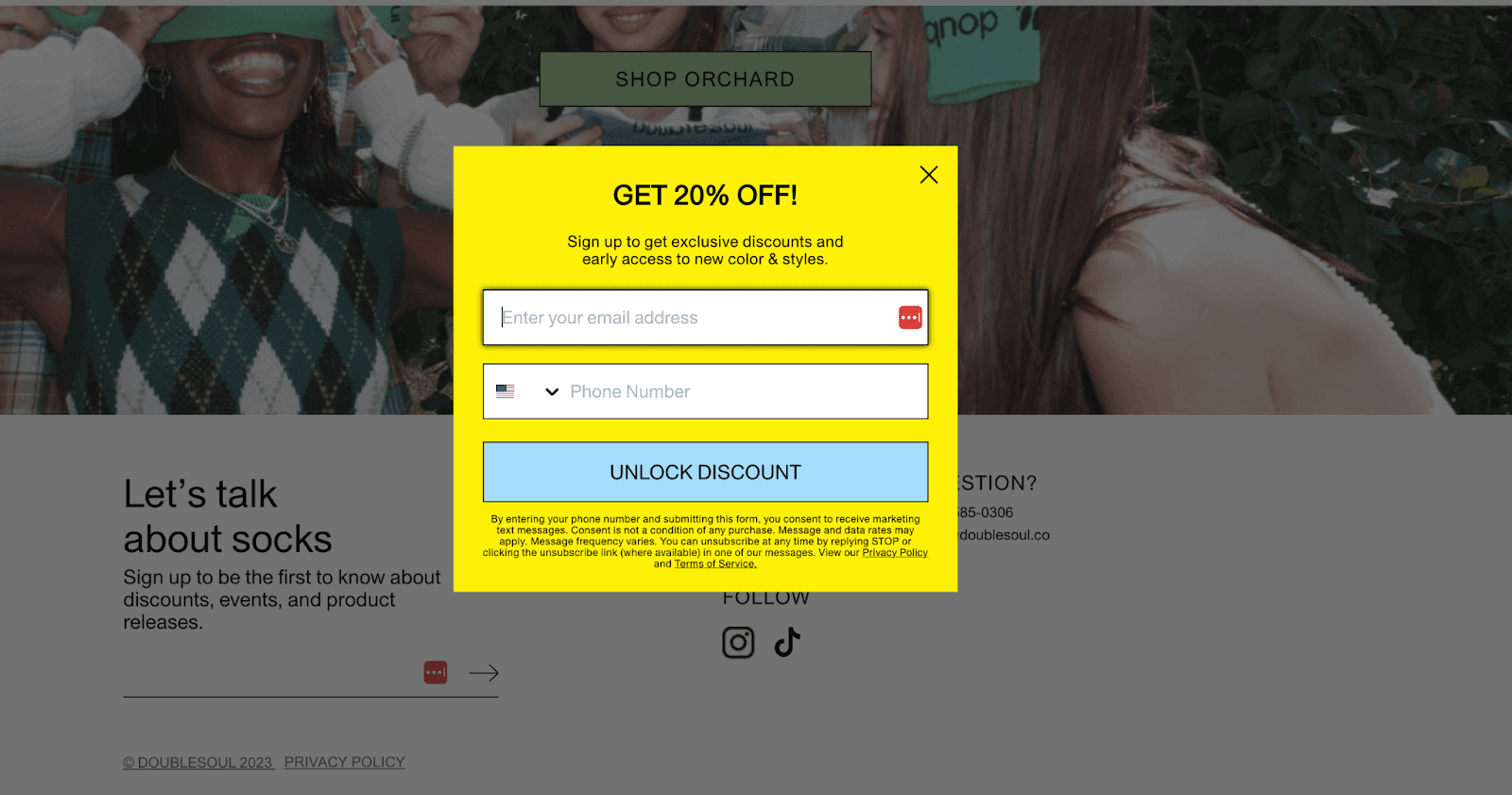
Gamify your email signups
Although discounts and offers are proven ways to drive signups, these days, businesses are looking for a more interactive way to engage users while also capturing contact details, particularly for e-commerce brands.
Gamification is an engagement technique that involves making the signup process the fun of competition by incorporating activities like leaderboards, points, badges, and challenges. By leveraging these techniques, you can set up interactive email forms that, first and foremost, engage users and allow you to obtain relevant information for your e-commerce email list.
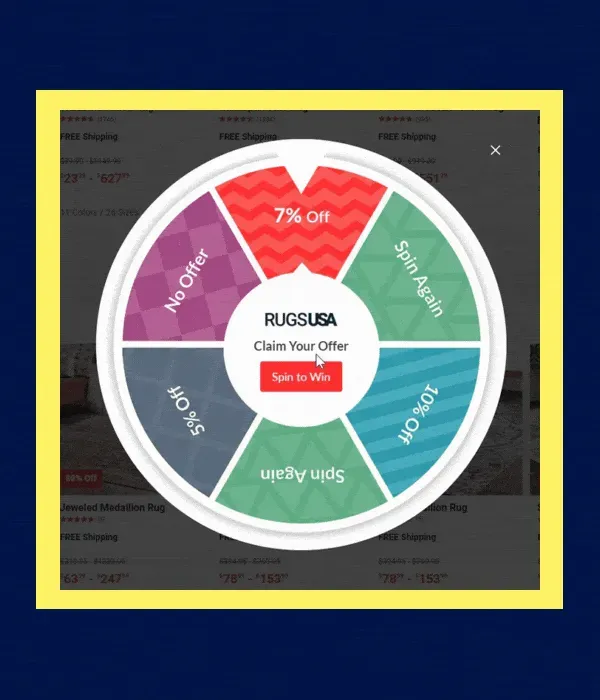
Make use of content marketing
When it comes to marketing, content is always considered a king, and the case is the same for e-commerce. Well-written content allows you to establish a solid brand presence on search engine result pages and drive traffic to your platform.
Plus, the high-ranking blog pages act as crucial locations to include an opt-in box for continuous conversions. Furthermore, you can send these blogs or articles directly to the inboxes of your customers after you get their email addresses, allowing them to read your content straight from the email.
Engage via surveys & quizzes
Quizzes and surveys are interactive components that enable you to interact with visitors in a fun way. You can incorporate quizzes within your website to engage customers, learn more about their interests, and ask them to provide their email addresses to receive results in their inbox.
This type of sales engagement piques customer interest and at the same time, gives you relevant information about them to let you personalize your future communications.
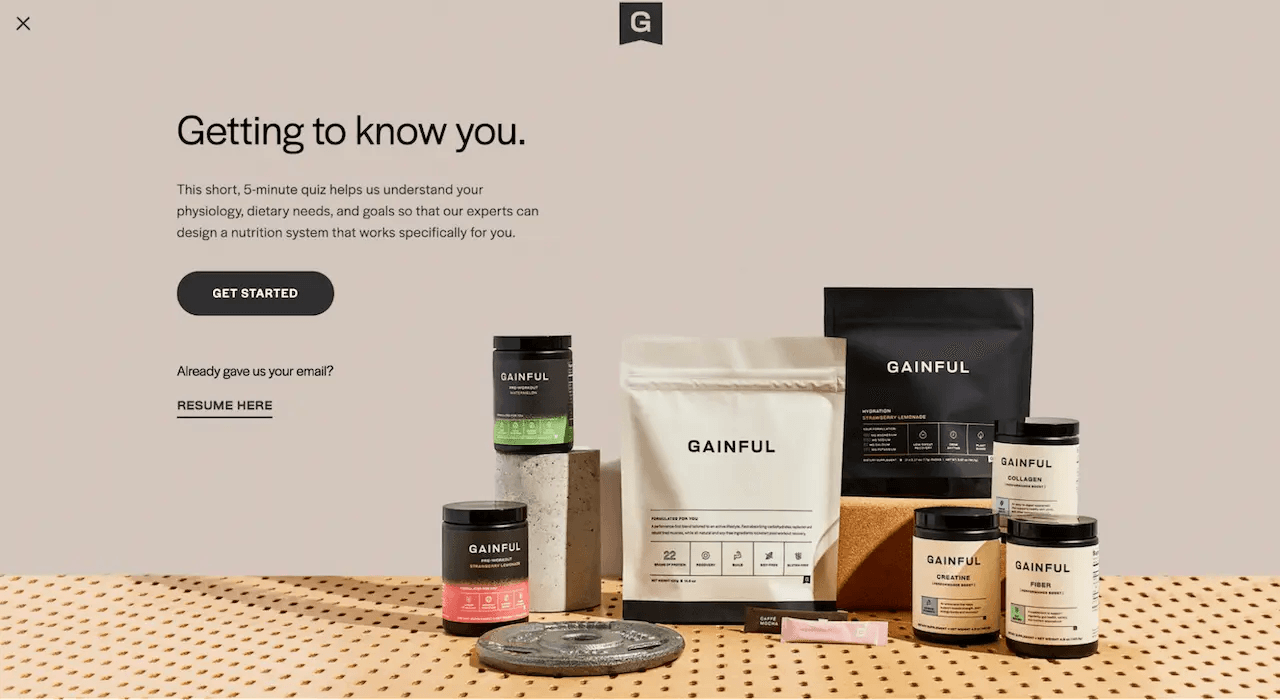
Ensure correct CTAs
Till now, we have seen a lot of different ways to capture the email addresses of your customers. However, the aspect that is probably the most important is the CTA you put in the signup forms.
The CTA is the final text your visitors will see before deciding whether to sign up or ignore your forms. An encouraging CTA can convince users to follow through with the process and unlock exciting rewards.
Here are some of the examples of convincing CTAs:
- Unlock Exclusive Deals
- Shop Smarter, Subscribe
- Exclusive Discounts Await
- Get First Dibs
- Steal the Deal
- Join & Shop Happy
- Don’t Miss Out
Based on the signup form and its location, you can tailor your CTA to give users a final push to sign up for your e-commerce email list without sounding too forced.
How can Zixflow help you craft perfect e-commerce email lists?
I am sure that after going through this blog you are ready to start building your e-commerce email lists for tailored email marketing initiatives. To do that, you have to get an email form builder tool to design your WhatsApp opt-in forms and save responses for future use.
Zixflow is one of those solutions that allows you to create custom forms to capture valuable lead or customer information effectively. Using the intuitive form builder, you can build your email opt-in forms with no limit on the number of questions and submissions.
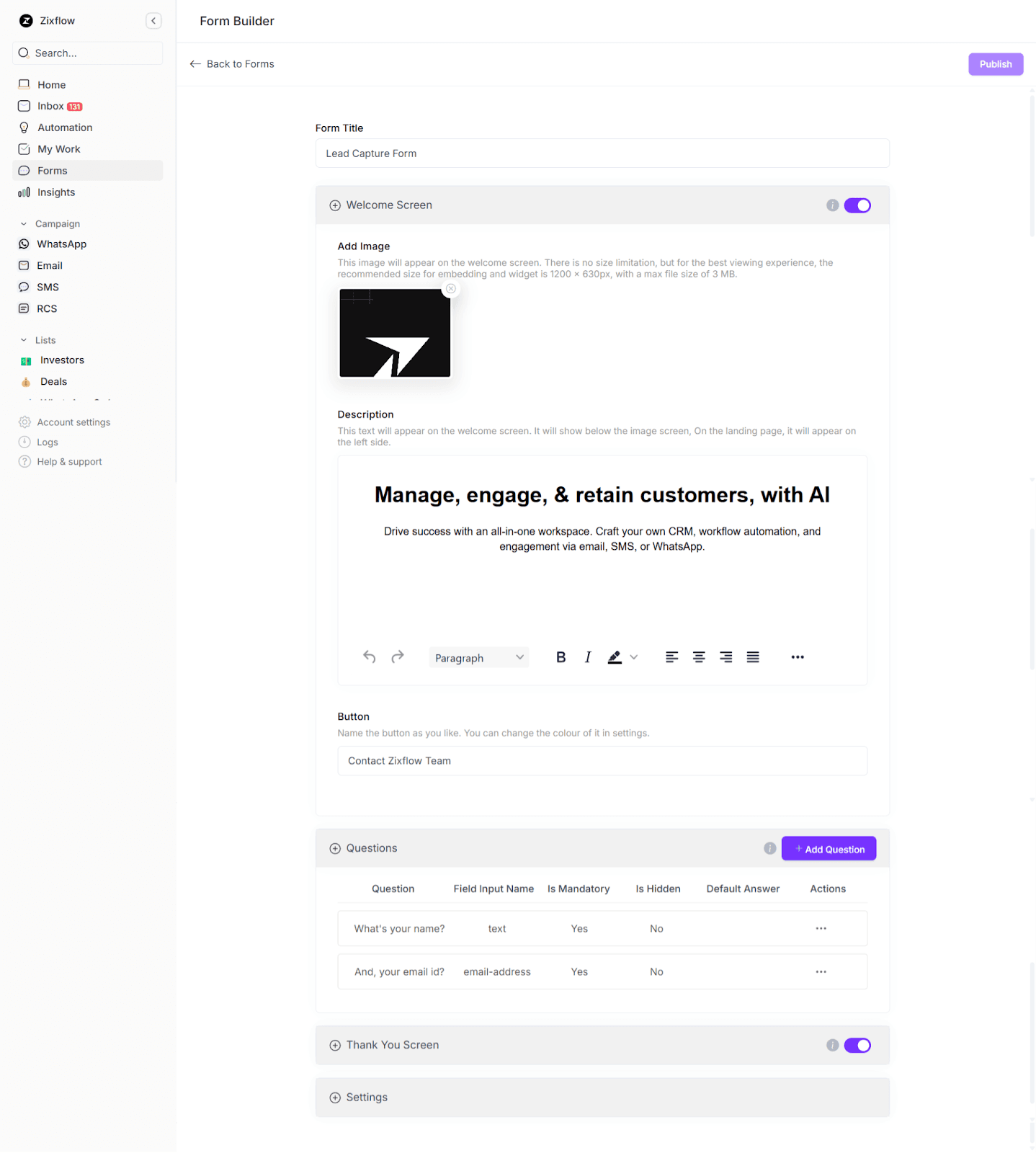
Moreover, these forms can be shared across any platform with a simple link or embedded in your website on the pages you like. You can also change how these forms are viewed by your users, choosing between a normal, landing page, or a modern view.
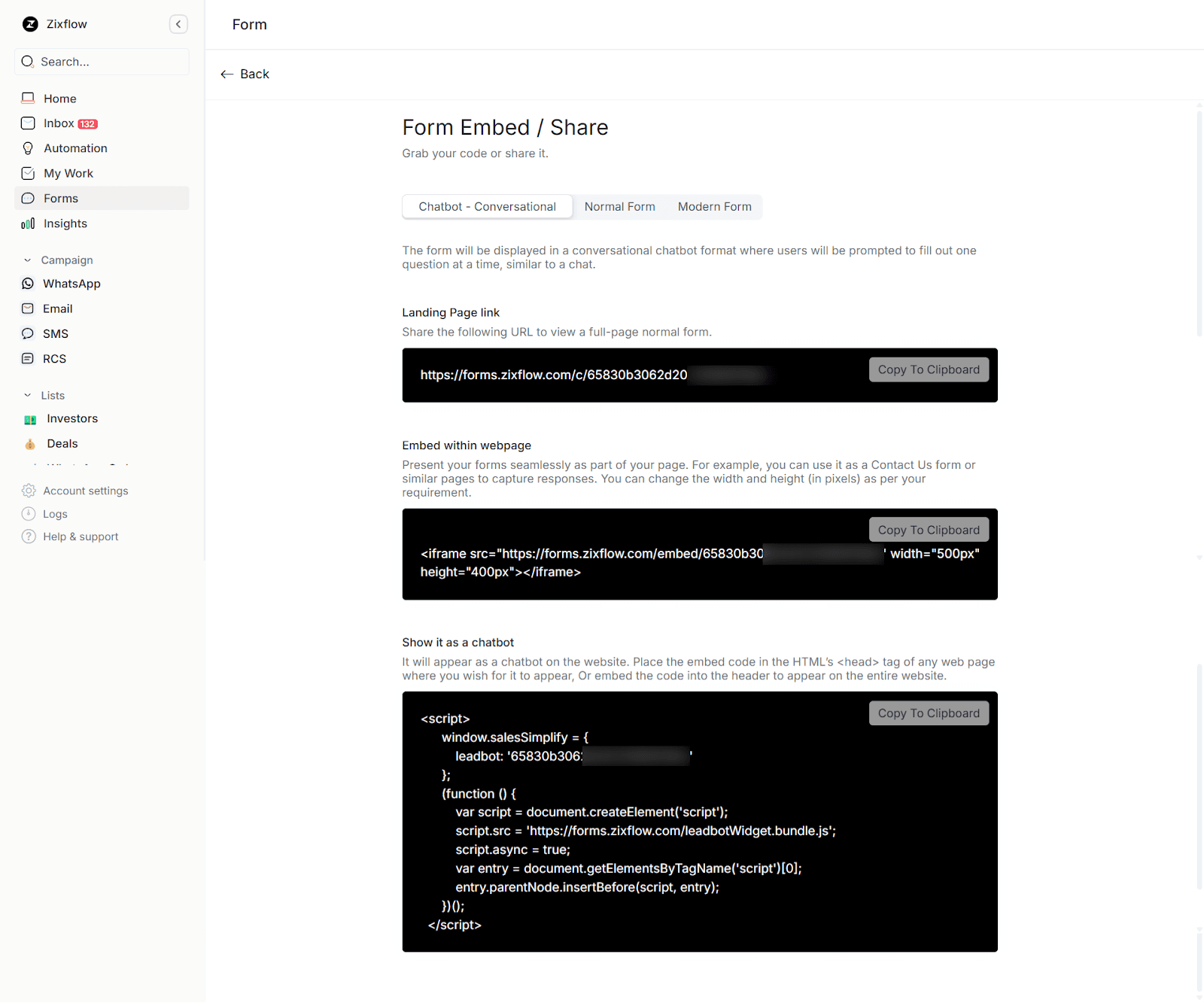
Forms are one thing but you need to save the submissions into a platform for future engagement. Zixflow automatically saves the responses in the custom list that you would have linked at the time of creating the form. This way, you don’t have to manually move this data and streamline your e-commerce email list-building process.
Also, to ensure the accuracy of your email list, we provide an in-built email validation feature to find out whether the email is valid and can receive messages. This allows you to make sure your emails are landing in the right inboxes to enable you to enhance your ROI.
On top of that, since Zixflow is a multichannel engagement platform, you can run email marketing campaigns to engage your users across the stages of the sales pipeline. Its user-friendly UI makes it very easy to set up and execute your email campaigns. Here’s a video to walk you through the entire process:
Ready to kickstart your outreach with accurate e-commerce email lists?
If you want to make email a primary channel for customer engagement, you need an e-commerce email list that is not only accurate but also constantly updated. Using the strategies mentioned above, you have to build a marketing list to nurture leads until they make a purchasing decision.
A well-crafted and maintained e-commerce list is a valuable asset for your business as it allows you to stay in touch with your audience regardless of constant policy changes in social media or messaging apps.
Having said that, once you have successfully made an email list, you will also require the right e-commerce email marketing platforms to interact with your prospects.
For this reason, Zixflow provides complete email marketing capabilities from building opt-in forms, validating email addresses, managing contact details, and running outreach campaigns—all from a single platform.
Try out the platform with a free 7-day trial or book a demo to see it in action with our sales team.
